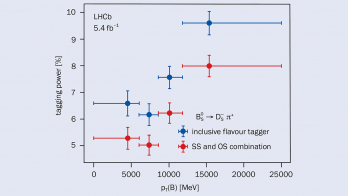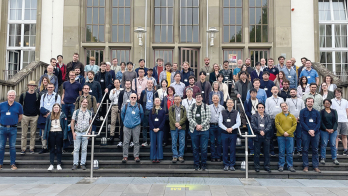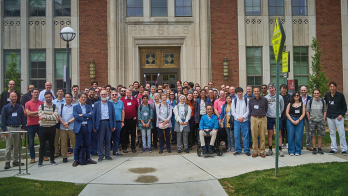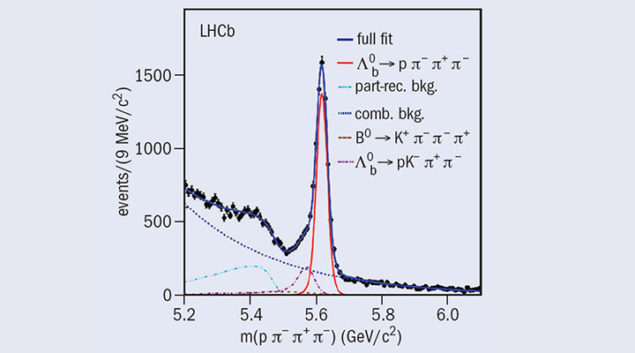

The LHCb experiment has uncovered tantalising evidence that baryons made of matter behave differently to those made of antimatter, violating fundamental charge-parity (CP) symmetry. Although CP-violating processes have been studied for more than 50 years, dating back to the Nobel-prize winning experiment of James Cronin and Val Fitch in 1964, CP violation has only been observed in mesons – that is, hadrons made of a quark and an antiquark. Until now, no significant effects had been seen in baryons, which are three-quark states, despite predictions from the Standard Model (SM) that CP violation also exists in the baryon sector.
Searching for new sources of CP violation, which is one of the main goals of LHCb, could help account for the overwhelming excess of matter over antimatter observed on cosmological scales. Since this excess is too large to be explained by CP violation as described in the SM, other sources must contribute.

The new LHCb result is based on an analysis of data collected during Run 1 of the LHC, from which the collaboration isolated a sample of Λ0b baryons (comprising a beauty, up and down quark) decaying into a proton plus three charged pions. The analysis also selected events in which the antimatter Λ0b baryon decays into an antiproton and three pions. Both of these processes are extremely rare and have never previously been observed. The high production cross-section of beauty baryons at the LHC and the specialised capabilities of the LHCb detector allowed a pure sample of around 6000 such decays to be isolated (figure 1).
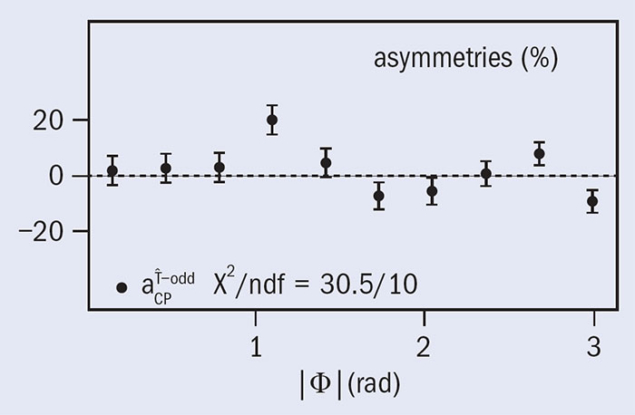
By studying the distribution of the four decay products and calculating quantities from the momenta of these final-state particles, it is possible to make detailed comparisons between Λ0b and Λ0b baryons. Any significant difference, or asymmetry, between the quantities for the matter and antimatter cases would be a manifestation of CP violation. In a final refinement to the analysis, this comparison was made in different regions (or bins) mapped out by the kinematics of the decay products. Any CP violation present is expected to vary both in magnitude and sign across phase-space, and hence could be diluted or washed out entirely if not searched for separately in these individual bins.
The LHCb data revealed significant non-zero asymmetries in certain bins (figure 2) and the general pattern of asymmetries across all bins was found to be inconsistent from that which would be expected in the CP-conserving case with a statistical significance of 3.3σ.
The results, published in Nature Physics, will soon be updated with the larger data set collected so far in Run 2. If this signal of CP violation is reproduced and seen with greater significance in the larger sample, the result will be an important milestone in the study of CP violation.






